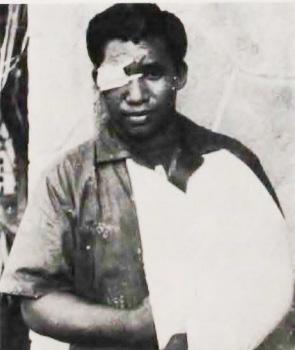
4 minute read
Campus construction
Campus construction history and updates
Nearly every wall of campus will be touched in the next five years, says campus construction director
BY SERENA DUGAR IOANE
An early look at campus
Former welcome sign for the Church College of Hawaii


Labor missionaries working hard to build the school
Some were injured while they served

The original name of the university was the Church College of Hawaii

With its prophetic beginning in 1955, the North Shore’s sole university now plans to roll out $500 million of projects over the course of five years.
When a snail grows, the shell expands as well. Just like that, the campus needs more housing to accommodate the growing student body of BYU–Hawaii. Cory Higgins, vice president of Operations at BYUH, explained how to meet the housing demand, the university is planning to build the following: • Three new hales • Eight new faculty housing duplexes • Six new TVA buildings • A new cafeteria • New Science and Mathematics building
Campus construction history
Brooks Haderlie, the university archivist, said when the decision was made to build the school in 1955, the Church did not have enough funds, so labor missionaries provided free labor. Two batches of labor missionaries built the BYUH campus, Polynesian Cultural Center and parts of the Laie temple and the Temple Visitors’ Center under the supervision of a few construction engineers from the U.S. mainland.
The first batch of missionaries built the McKay Building, cafeteria, original wing of the library and Hales 1 and 2 from 1955 to 1958. The second group of labor missionaries built PCC, chapels around Hawaii, and parts of the temple between 1960 and 1963.
Most of the labor missionaries went back to their home countries, but some of them stayed and married local women, Haderlie said. Other buildings on campus were added over the years. [See more details from the infographic on Pages 48-49.] Percy TeHira, an 86-year-old labor missionary from New Zealand who lives in Laie, said he started his labor mission in 1952 in New Zealand and came to Hawaii in 1960. He worked for three years and helped to build the Little Theater, hales and parts of the temple.
He said labor missionaries were sustained by their ward and stake members. They used to work eight to 15 hours per day. TeHira said although it was hard labor, it was a spiritual experience strengthening his testimony. “We always remembered we were doing the Lord’s work, and this mission blessed my life tremendously.” While he was a labor missionary, he said he found the love of his life, married her, and stayed in Laie. Later he was hired as a carpenter and construction worker at BYUH Facilities Management and retired from BYUH.
Updates and renovations
Higgins said the school is planning to increase the total students up to 3,500 and needs more housing. Currently, 75 percent of the students of BYUH are living on-campus. They are aiming to provide on-campus housing for 95 percent of the students, he explained.
Director of Planning and Construction, James Brown, said three new hales will be built behind the existing hales. Construction work for eight faculty housing duplexes is in process now.
Higgins said the Temple View Apartments will be renovated in four phases. First, three new buildings will be added. Building A1 will be built next to the Z building, building D2 behind the Stake Center, and building D3 next to the X building. New roads will be built to provide entry for the new buildings. Phase two will be tearing down buildings A to F and building new buildings in their place. Future phases will replace most of the older buildings in TVA. Brown said the General Classroom Building (GCB) will be replaced by a three-story Science and Mathematics building. The old GCB used to routinely flood, so the new one will be elevated as high as the HGB, he explained. The construction work will be done in two years. He also shared when the building is done, the science and mathematics classes and offices will be moved into it, and major remodeling of the McKay complex will start.
Regarding placing mother’s rooms into any buildings, Higgins explained, “Details of adding mother’s rooms to any new buildings or major renovations will be considered as we get into design. Currently, we are still in early planning.”
A new two-story cafeteria already begin construction and will be done in 18 months, Higgins said. Also in the planning stages is a major remodeling of the Lorenzo Snow Building. Current plans include PCC offices located in the LSB being moved onto PCC property, and BYUH student services moved to different locations. The plan is to connect the LSB’s separate sections into one big building.
Brown said new solar arrays will be built over parking lots in many areas of campus to provide renewable solar energy for the school. The BYUH Health Center will be moved into the School of Education Building, Higgins shared.
He further explained how “there is a desire to move the Faculty of Education closer to the core academic areas of campus. This is likely to be in or around the [McKay Building] but planning is not yet complete. The Health Center on the periphery of campus and closer to the student families in TVA is a good reuse of the current education building.” •











